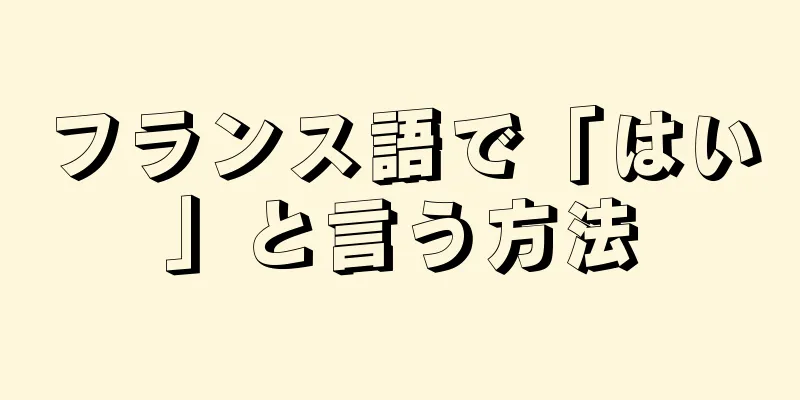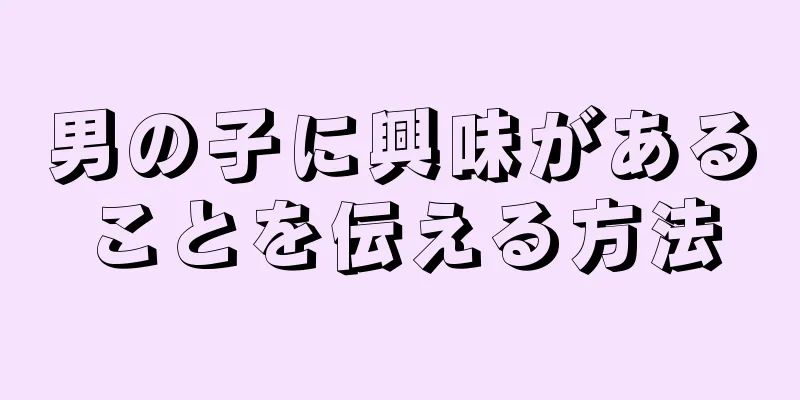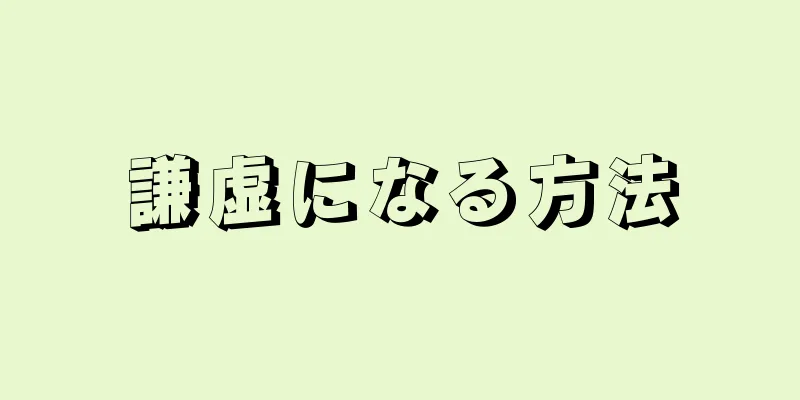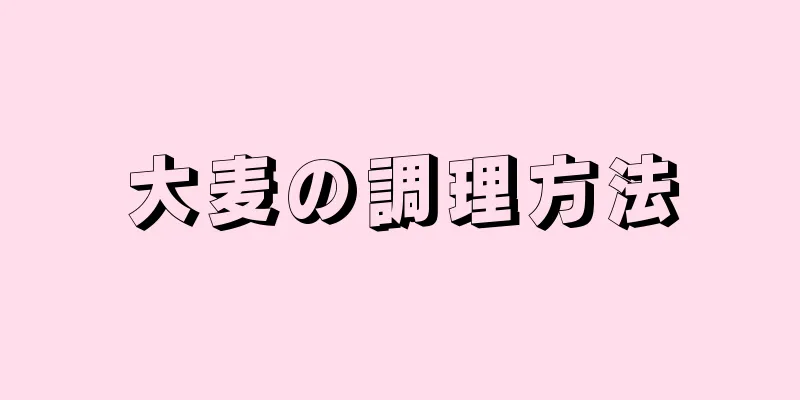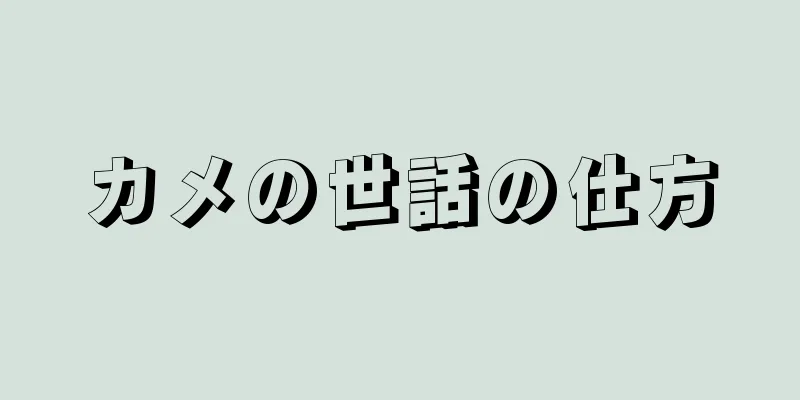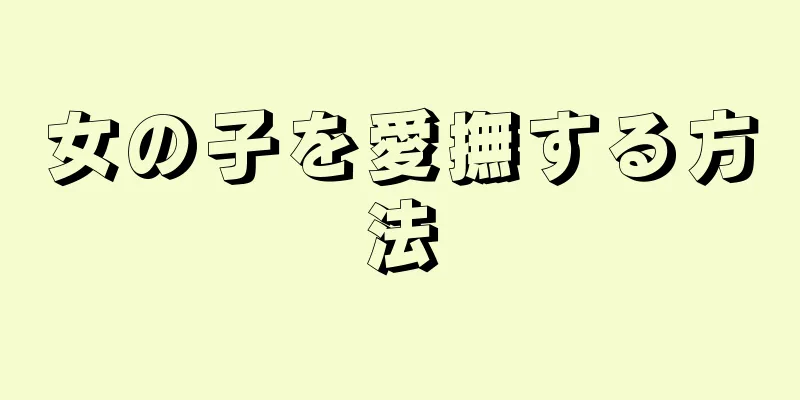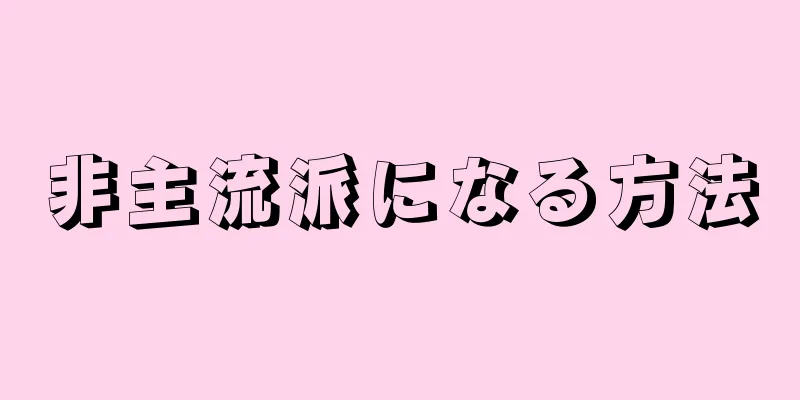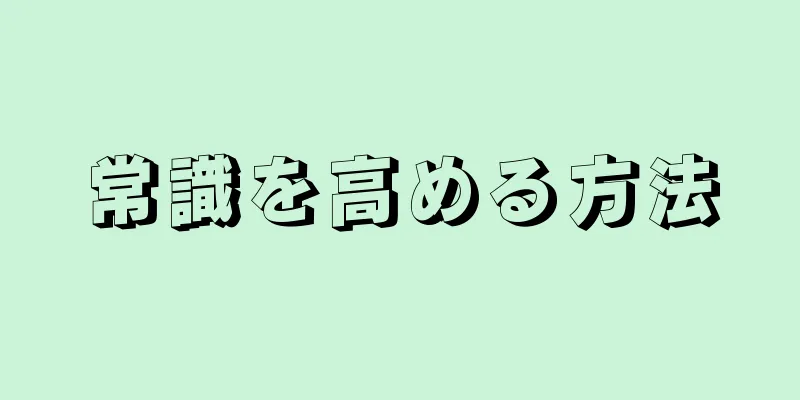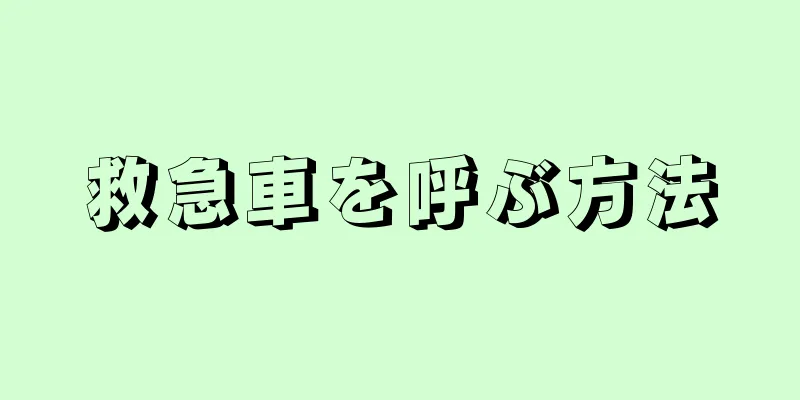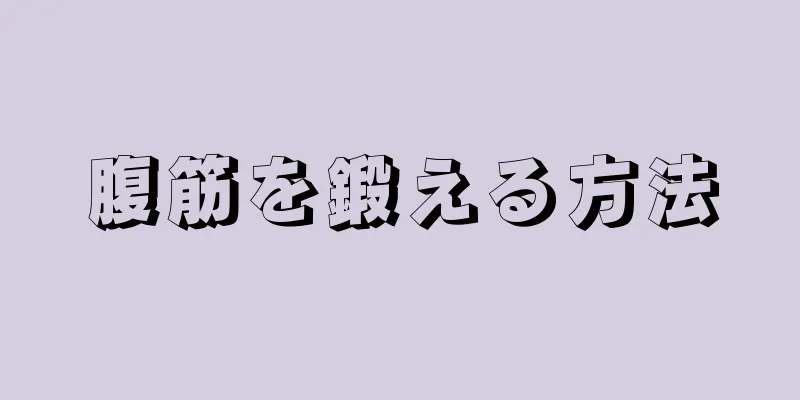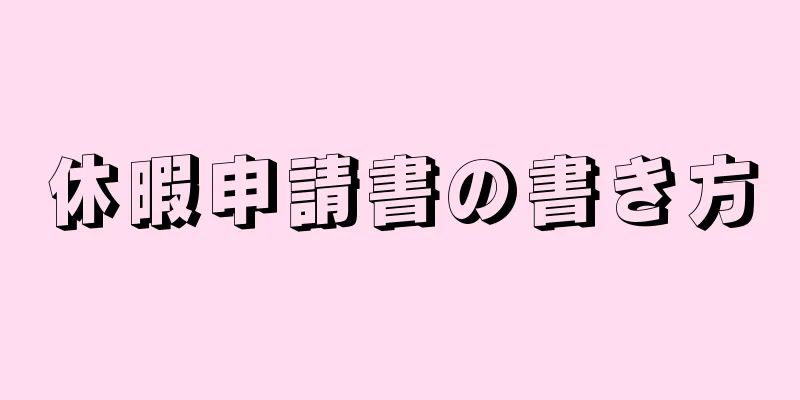フランス語で「はい」と言う最も基本的な方法は「Oui」です。しかし、「はい」と答えるときには、肯定的に応答する方法は他にもあります。ここでは、学ぶ価値のある方法をいくつか紹介します。
ステップ 以下のテキストで使用されている発音表記はアメリカ英語に基づいています。単語や文章の具体的な発音を知りたい場合は、ここで発音を確認できます。
方法1方法 1/4:基本的な「はい」 {"smallUrl":"https:\/\/www.wikihow.com\/images_en\/thumb\/0\/01\/Say-Yes-in-French-Step-1.jpg\/v4-460px-Say-Yes-in-French-Step-1.jpg","bigUrl":"https:\/\/www.wikihow.com\/images\/thumb\/0\/01\/Say-Yes-in-French-Step-1.jpg\/v4-728px-Say-Yes-in-French-Step-1.jpg","smallWidth":460,"smallHeight":345,"bigWidth":728,"bigHeight":546,"licensing":"<div class=\"mw-parser-output\"><\/div>"} 1 「oui」と言います。 [1] この文は単純に「はい」と翻訳されます。このフレーズは「はい」と言う基本的な方法であり、フォーマルな会話でも非公式な会話でも、ほとんどすべての状況で使用できます。 このフランス語の単語は「ウィー」 と発音されます。 より丁寧にしたい場合は、敬称の後に「Mr.」「Ms.」「Miss」などを付けてください。 Sir は「muh-see-euh」 と発音され、「Mr.」と訳されます。 「Oui, monsieur」 と言ってもいいでしょう。 マダム は「マダム」 と発音され、「淑女」と訳されます。はい、マダム と言ってください。 Miss はmah-dehm-mwah-zel と発音され、「ミス」と訳されます。 「Oui, mademoiselle」 と言ってください。 {"smallUrl":"https:\/\/www.wikihow.com\/images_en\/thumb\/c\/c0\/Say-Yes-in-French-Step-2.jpg\/v4-460px-Say-Yes-in-French-Step-2.jpg","bigUrl":"https:\/\/www.wikihow.com\/images\/thumb\/c\/c0\/Say-Yes-in-French-Step-2.jpg\/v4-728px-Say-Yes-in-French-Step-2.jpg","smallWidth":460,"smallHeight":345,"bigWidth":728,"bigHeight":546,"licensing":"<div class=\"mw-parser-output\"><\/div>"} 2 「oui, merci」と丁寧に言うと、「はい、ありがとうございます」という意味になります。 Merci は 「ありがとう」または「感謝します」を意味します。 この文のフランス語の発音は「WEE, mehr-SEE」 です。 {"smallUrl":"https:\/\/www.wikihow.com\/images_en\/thumb\/1\/18\/Say-Yes-in-French-Step-3.jpg\/v4-460px-Say-Yes-in-French-Step-3.jpg","bigUrl":"https:\/\/www.wikihow.com\/images\/thumb\/1\/18\/Say-Yes-in-French-Step-3.jpg\/v4-728px-Say-Yes-in-French-Step-3.jpg","smallWidth":460,"smallHeight":345,"bigWidth":728,"bigHeight":546,"licensing":"<div class=\"mw-parser-output\"><\/div>" } 「plaît」も丁寧な表現です。 「はい、お願いします」という意味です。フレーズとして、 s'il vous plaît は 「お願いします」と翻訳され、より文字通りには「ご都合がよろしければ」という意味になります。 S'ilは 「もし」を意味します。 Vous は 「あなた」を意味します。 Plaît は 「お願いします」という意味です。 このフランス語のフレーズは「WEE, seell voo PLEH」 と発音します。 2方法 2/4: 「はい」の俗語 {"smallUrl":"https:\/\/www.wikihow.com\/images_en\/thumb\/4\/41\/Say-Yes-in-French-Step-4.jpg\/v4-460px-Say-Yes-in-French-Step-4.jpg","bigUrl":"https:\/\/www.wikihow.com\/images\/thumb\/4\/41\/Say-Yes-in-French-Step-4.jpg\/v4-728px-Say-Yes-in-French-Step-4.jpg","smallWidth":460,"smallHeight":345,"bigWidth":728,"bigHeight":546,"licensing":"<div class=\"mw-parser-output\"><\/div>"} 1ランダムに「ouai」と返信します。 [2] このフランス語の単語は英語の単語「yeah」に相当します。このフランス語のスラングは、大まかに「wee-ay」 と発音されます。 {"smallUrl":"https:\/\/www.wikihow.com\/images_en\/thumb\/5\/58\/Say-Yes-in-French-Step-5.jpg\/v4-460px-Say-Yes-in-French-Step-5.jpg","bigUrl":"https:\/\/www.wikihow.com\/images\/thumb\/5\/58\/Say-Yes-in-French-Step-5.jpg\/v4-828px-Say-Yes-in-French-Step-5.jpg","smallWidth":460,"smallHeight":345,"bigWidth":828,"bigHeight":546,"licensing":"<div class=\"mw-parser-output\"><\/div>"} 2 「ouaip」を使用しても機能します。 このフランス語の単語は英語の単語「yep」に相当します。この単語のフランス語での発音は、だいたい「ウィーアイプ」 です。 3方法 3/4:強い肯定 {"smallUrl":"https:\/\/www.wikihow.com\/images_en\/thumb\/2\/27\/Say-Yes-in-French-Step-6.jpg\/v4-460px-Say-Yes-in-French-Step-6.jpg","bigUrl":"https:\/\/www.wikihow.com\/images\/thumb\/2\/27\/Say-Yes-in-French-Step-6.jpg\/v4-728px-Say-Yes-in-French-Step-6.jpg","smallWidth":460,"smallHeight":345,"bigWidth":728,"bigHeight":546,"licensing":"<div class=\"mw-parser-output\"><\/div>"} 1 「évidemment」という表現は「明らかに」と翻訳できます。 このフランス語の単語は「エヴィーダマー」 と発音されます。 {"smallUrl":"https:\/\/www.wikihow.com\/images_en\/thumb\/7\/7a\/Say-Yes-in-French-Step-7.jpg\/v4-460px-Say-Yes-in-French-Step-7.jpg","bigUrl":"https:\/\/www.wikihow.com\/images\/thumb\/7\/7a\/Say-Yes-in-French-Step-7.jpg\/v4-728px-Say-Yes-in-French-Step-7.jpg","smallWidth":460,"smallHeight":345,"bigWidth":728,"bigHeight":546,"licensing":"<div class=\"mw-parser-output\"><\/div>"} 2 「certainement」と言います。 「決定的に」または「確実に」という意味です。この単語は「sehr-tehn-mah」 と発音します。 {"smallUrl":"https:\/\/www.wikihow.com\/images_en\/thumb\/3\/3c\/Say-Yes-in-French-Step-8.jpg\/v4-460px-Say-Yes-in-French-Step-8.jpg","bigUrl":"https:\/\/www.wikihow.com\/images\/thumb\/3\/3c\/Say-Yes-in-French-Step-8.jpg\/v4-728px-Say-Yes-in-French-Step-8.jpg","smallWidth":460,"smallHeight":345,"bigWidth":728,"bigHeight":546,"licensing":"<div class=\"mw-parser-output\"><\/div>"} 3 「carrément」で返信します。 この単語は英語の「firmly」に相当します。フランス語の単語は「kah-ray-mah」 と発音されます。 {"smallUrl":"https:\/\/www.wikihow.com\/images_en\/thumb\/5\/55\/Say-Yes-in-French-Step-9.jpg\/v4-460px-Say-Yes-in-French-Step-9.jpg","bigUrl":"https:\/\/www.wikihow.com\/images\/thumb\/5\/55\/Say-Yes-in-French-Step-9.jpg\/v4-728px-Say-Yes-in-French-Step-9.jpg","smallWidth":460,"smallHeight":345,"bigWidth":728,"bigHeight":546,"licensing":"<div class=\"mw-parser-output\"><\/div>"} 4「tout à fait」と答えます。 この文は「とても」という意味です。 「完全に」または「一般的に言えば、はい。」 Tout は 「すべて」または「すべて」を意味します。 フランス語の「à」 は英語では「with」、「to」、「by」、「in」(方向を表す前置詞)と翻訳できます。 Fait は 「事実」、「出来事」、または「存在」を意味します。 このフランス語のフレーズは「too tah feh」 と発音されます。 {"smallUrl":"https:\/\/www.wikihow.com\/images_en\/thumb\/4\/4b\/Say-Yes-in-French-Step-10.jpg\/v4-460px-Say-Yes-in-French-Step-10.jpg","bigUrl":"https:\/\/www.wikihow.com\/images\/thumb\/4\/4b\/Say-Yes-in-French-Step-10.jpg\/v4-728px-Say-Yes-in-French-Step-10.jpg","smallWidth":460,"smallHeight":345,"bigWidth":728,"bigHeight":546,"licensing":"<div class=\"mw-parser-output\"><\/div>"} 5 「en effet」と答えます。これは「確かに」と訳されます。あるいは「実際」。 En は 「…に関して」を意味します。 Effet は 「事実」を意味します。 このフランス語のフレーズは「ahn ay-feh」 と発音されます。 {"smallUrl":"https:\/\/www.wikihow.com\/images_en\/thumb\/7\/71\/Say-Yes-in-French-Step-11.jpg\/v4-460px-Say-Yes-in-French-Step-11.jpg","bigUrl":"https:\/\/www.wikihow.com\/images\/thumb\/7\/71\/Say-Yes-in-French-Step-11.jpg\/v4-728px-Say-Yes-in-French-Step-11.jpg","smallWidth":460,"smallHeight":345,"bigWidth":728,"bigHeight":546,"licensing":"<div class=\"mw-parser-output\"><\/div>" } この文は「もちろんです!」と翻訳できます。 Bien は 「良い」または「うまく」という意味です。 Sûr は 「確かな」または「自信のある」という意味です。 このフランス語のフレーズは、おおよそ「byahng soor」 と発音されます。 方法 4/4:その他の肯定的な回答 {"smallUrl":"https:\/\/www.wikihow.com\/images_en\/thumb\/a\/a9\/Say-Yes-in-French-Step-12.jpg\/v4-460px-Say-Yes-in-French-Step-12.jpg","bigUrl":"https:\/\/www.wikihow.com\/images\/thumb\/a\/a9\/Say-Yes-in-French-Step-12.jpg\/v4-728px-Say-Yes-in-French-Step-12.jpg","smallWidth":460,"smallHeight":345,"bigWidth":728,"bigHeight":546,"licensing":"<div class=\"mw-parser-output\"><\/div>"} 1 「とても良い」という意味の丁寧な返事「très bien」。 Très は 「とても」という意味です。 Bienは 「大丈夫」という意味です。 このフランス語の発音はtray byahng です。 {"smallUrl":"https:\/\/www.wikihow.com\/images_en\/thumb\/b\/b5\/Say-Yes-in-French-Step-13.jpg\/v4-460px-Say-Yes-in-French-Step-13.jpg","bigUrl":"https:\/\/www.wikihow.com\/images\/thumb\/b\/b5\/Say-Yes-in-French-Step-13.jpg\/v4-728px-Say-Yes-in-French-Step-13.jpg","smallWidth":460,"smallHeight":345,"bigWidth":728,"bigHeight":546,"licensing":"<div class=\"mw-parser-output\"><\/div>"} 2 「C'est bien」と言います。 [3] この文は「これは良い」という意味です。 C'est は 「これは...」という意味です。 Bienは 「大丈夫」という意味です。 このフランス語のフレーズは、say byahng と発音されます。 {"smallUrl":"https:\/\/www.wikihow.com\/images_en\/thumb\/e\/e9\/Say-Yes-in-French-Step-14.jpg\/v4-460px-Say-Yes-in-French-Step-14.jpg","bigUrl":"https:\/\/www.wikihow.com\/images\/thumb\/e\/e9\/Say-Yes-in-French-Step-14.jpg\/v4-728px-Say-Yes-in-French-Step-14.jpg","smallWidth":460,"smallHeight":345,"bigWidth":728,"bigHeight":546,"licensing":"<div class=\"mw-parser-output\"><\/div>"} 3 「Ça va」と言います。これは単に「わかりました」という意味です。 Ça は 「これ」を意味します。 Va は フランス語のaller の活用形で、「行く」「する」「なる」という意味です。 これをフランス語で読むときは、 sah vah と綴ります。 {"smallUrl":"https:\/\/www.wikihow.com\/images_en\/thumb\/6\/66\/Say-Yes-in-French-Step-15.jpg\/v4-460px-Say-Yes-in-French-Step-15.jpg","bigUrl":"https:\/\/www.wikihow.com\/images\/thumb\/6\/66\/Say-Yes-in-French-Step-15.jpg\/v4-728px-Say-Yes-in-French-Step-15.jpg","smallWidth":460,"smallHeight":345,"bigWidth":728,"bigHeight":546,"licensing":"<div class=\"mw-parser-output\"><\/div>"} 4 「d'accord」を使用するその答えは中国語で「おいで!」に相当します。 このフランス語の単語は「ダコール」 と発音されます。 {"smallUrl":"https:\/\/www.wikihow.com\/images_en\/thumb\/e\/ed\/Say-Yes-in-French-Step-16.jpg\/v4-460px-Say-Yes-in-French-Step-16.jpg","bigUrl":"https:\/\/www.wikihow.com\/images\/thumb\/e\/ed\/Say-Yes-in-French-Step-16.jpg\/v4-728px-Say-Yes-in-French-Step-16.jpg","smallWidth":460,"smallHeight":345,"bigWidth":728,"bigHeight":546,"licensing":"<div class=\"mw-parser-output\"><\/div>"} 5 件の返信で「volontiers」と回答。 このフレーズは「そうします!」という意味です。このフランス語のフレーズは「vuh-loh-tyay」 と発音します。 {"smallUrl":"https:\/\/www.wikihow.com\/images_en\/thumb\/2\/27\/Say-Yes-in-French-Step-17.jpg\/v4-460px-Say-Yes-in-French-Step-17.jpg","bigUrl":"https:\/\/www.wikihow.com\/images\/thumb\/2\/27\/Say-Yes-in-French-Step-17.jpg\/v4-728px-Say-Yes-in-French-Step-17.jpg","smallWidth":460,"smallHeight":345,"bigWidth":728,"bigHeight":546,"licensing":"<div class=\"mw-parser-output\"><\/div>"} 6 人が「avec plaisir」と喜んで返信しました。 中国語では「喜んでお受けします!」という意味です。 Avec は 「~とともに」という意味です。 Plaisirは 「喜び」を意味します。 このフランス語のフレーズは「アーヴェク・プレイセ」 と発音されます。 